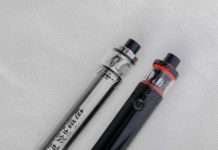- On today’s episode, we discuss humanity’s deep connection to water and hear sounds of one of the most ancient animal migrations on Earth, that of the Sandhill crane.
- Our first guest today is marine biologist and conservationist Wallace J. Nichols, the author of Blue Mind: The Surprising Science That Shows How Being Near, In, On, or Under Water Can Make You Happier, Healthier, More Connected, & Better at What You Do.
- Our second guests are Ben Gottesman and Emma Brinley Buckley, researchers who are using bioacoustics to document Sandhill cranes on the Platte River in the U.S. state of Nebraska as the birds make a stopover during their annual migration. We’ll hear recordings of the cranes and other important species in this Field Notes segment.
On today’s episode, we discuss humanity’s deep connection to water and hear sounds of one of the most ancient animal migrations on Earth, that of the Sandhill crane.
Listen here:
Our first guest today is marine biologist and conservationist Wallace J. Nichols, the author of Blue Mind: The Surprising Science That Shows How Being Near, In, On, or Under Water Can Make You Happier, Healthier, More Connected, & Better at What You Do. The book not only examines the critical importance of mankind’s connection to water but also seeks to provide a blueprint for how we can live a better life by understanding this connection.
Nichols is here to tell us about the findings he details in the book about the critical importance of bodies of water to human health and well-being, as well as a movie also called Blue Mind that he’s making right now on the same subject. We had to take the opportunity to ask J, as Nichols prefers to be called, about his past work in sea turtle biology and conservation, as well.
Our second guests are Ben Gottesman of the Center for Global Soundscapes at Purdue University and Emma Brinley Buckley of the Platte Basin Timelapse project. Gottesman and Buckley are using bioacoustics to document Sandhill cranes on the Platte River in the U.S. state of Nebraska as the birds make a stopover during their annual migration.
Not only are the researchers seeking to understand how climate change might be impacting the cranes’ migratory habits, they’re also examining how environmental factors impact the behavior of other important species in the Platte River ecosystem, such as chorus frogs. We’ll hear recordings of both species and more besides in this Field Notes segment.
Here are a couple soundscape timelapse videos Gottesman and Buckley have made pairing both audio and visual records of the Platte River ecosystem (you can see more of these videos in this “Intro to Sound-Scape Timelapses”):
Here’s this episode’s top news:
You can subscribe to the Mongabay Newscast on Android, Google Play, iTunes, Stitcher, TuneIn, or RSS.

Follow Mike Gaworecki on Twitter: @mikeg2001
FEEDBACK: Use this form to send a message to the author of this post. If you want to post a public comment, you can do that at the bottom of the page.
This story first appeared on Mongabay
South Africa Today – Environment
This article is licensed under a Creative Commons Attribution-NoDerivatives 4.0 International License.
You may republish this article, so long as you credit the authors and Mongabay, and do not change the text. Please include a link back to the original article.











